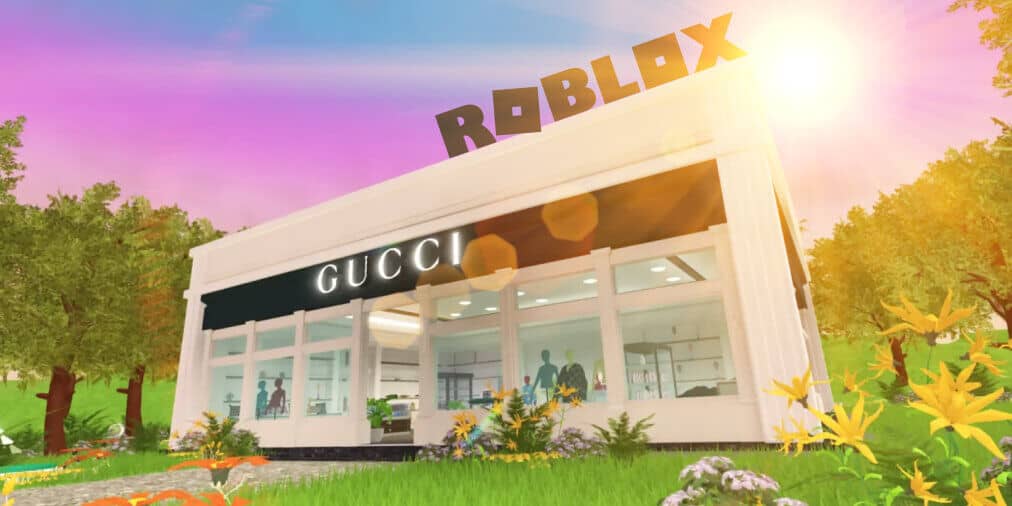In 1968, American computer scientist Ivan Sutherland predicted the future of augmented and virtual reality with his concept of the “Ultimate Display.” The Ultimate Display relied on the kinetic depth effect to create two dimensional images that moved with its users, giving the illusion of a three-dimensional display. While the concept of virtual reality only focuses on the creation of three-dimensional environments, the metaverse — a term coined by Neal Stephenson in his 1992 book Snow Crash — is a much broader concept that surpasses this, and could have sweeping implications for retail and other industries.
It was not until very recently than an official definition of the metaverse was put in place. According to Oxford University Press, the term “metaverse,” its second-place contender for word of the year, describes “a (hypothetical) virtual reality environment in which users interact with one another’s avatars and their surroundings in an immersive way, sometimes posited as a potential extension of or replacement for the internet, World Wide Web, social media, etc.” Since the term was first used, the idea of the metaverse has remained more of a fictional concept than a scientific one. However, with technological advancements in recent years, the metaverse has become more tangible. Much of the recent hype happened after Mark Zuckerberg made the announcement to rename the Facebook brand to Meta. Many players in the retailer space have since jumped aboard the metaverse train in hope of connecting with consumers and generating additional revenue.
Nike filed multiple trademark applications for its famous trademarks for use of on Nike shoes and apparel in the virtual world. JP Morgan opened their first virtual bank branch. And still yet, Samsung recreated their New York City flagship store in the virtual browser-based platform Decentraland, where they are launching new products and creating events. While many retailers are capitalizing on the metaverse early, there is still uncertainty about whether the metaverse really is the future of retailing or whether it will be a short-lived fad.
Managing Expectations
In its current form, the metaverse lacks the technological infrastructure to deliver on market expectations. It may be appropriate to compare the metaverse with the dot-com bubble between 1995 and 2000 that was caused by speculation in internet-based businesses. Similarly, there appears to be tremendous hype and expectations around what the technology can deliver in its current form. A recent survey of 1,500 consumers found that 51 percent of people expect customer service to be better in the metaverse, 32 percent expect less frustration and anxiety while dealing with customer service agents in the metaverse compared to phone interactions, and 27 percent expect interactions with metaverse virtual avatar assistants to be more effective than online chat-bots.
Consumers’ expectations can appear reasonable, but metaverse technology is still in its infancy stage, where the focus remains on developing infrastructure and processes for the future. Unrealistic expectations may potentially lead to a metaverse bubble as reality struggles to meet expectations.
Challenges for Retailers
As with any emerging technology, retailers need to be prepared for challenges posed by the metaverse. Some of these challenges include the following:
Data security and privacy: With the novelty of metaverse technology and the wealth of personal data collected, the metaverse will be an attractive target for cyber-hackers. New approaches and methods need to be considered for a safe metaverse that customers can trust.
Experienced talent: Having the right talent that can create, manage and support experiences in the metaverse needs to be at the forefront of engaging with the technology. However, due to the novelty of the technology, finding such talent will be a challenge.
Regulations: With no clear jurisdictions and regulations in place, the safety of virtual spaces in the metaverse may be compromised and end up pushing customers away. Retailers need to ensure these spaces are safe and protected.
Managing customer expectations: Retail entities need to educate their customers about what can currently be done in the metaverse, and what customers should expect from businesses in the metaverse.
Despite these challenges, retailers will still be able to craft novel shopping experiences in the metaverse — it will just require appropriately skilled and qualified people to make it happen. With appropriate planning and preparation, retailers will be able to meet these challenges head-on.
Opportunities for retailers
As technology improves, the potential uses of the metaverse for retailers will grow. At the moment, the metaverse offers retailers three key opportunities for improving the online shopping experience. The first is brand exposure. Retailers can expand their presence through virtual billboards and interactive advertisements with less noise, compared to existing online and mobile channels. Cloud Nine, an IT services company, is one of the earliest companies to advertise their services on virtual billboards in Decentraland. Virtual billboard advertising, which could be found in earlier metaverse platform Second Life, is something marketers should keep in mind.
Secondly, the metaverse offers unique experiences for customers to engage with brands through events, contests, and game-like features. Such experiences could increase loyalty and brand engagement. The Metaverse Fashion Week is an example of how retailers can create unique brand engagement opportunities. Retailers including Tommy Hilfiger, Perry Ellis, and Dolce & Gabbana all participated in the pilot experience, leading the wave for immersive and unique customer-brand interactions.
Lastly, the metaverse provides retailers the chance to personalize customer experiences. Similar to how retailers can customize customers’ online experiences through data collection, retailers can tailor customer experiences in the virtual environment. In Meta’s Horizon Worlds, for example, users can create their own virtual worlds, invite friends and customize their own experiences.
Omar Fares is a Lecturer in the Ted Rogers School of Retail Management at Toronto Metropolitan University. (This article was initially published by The Conversation.)











